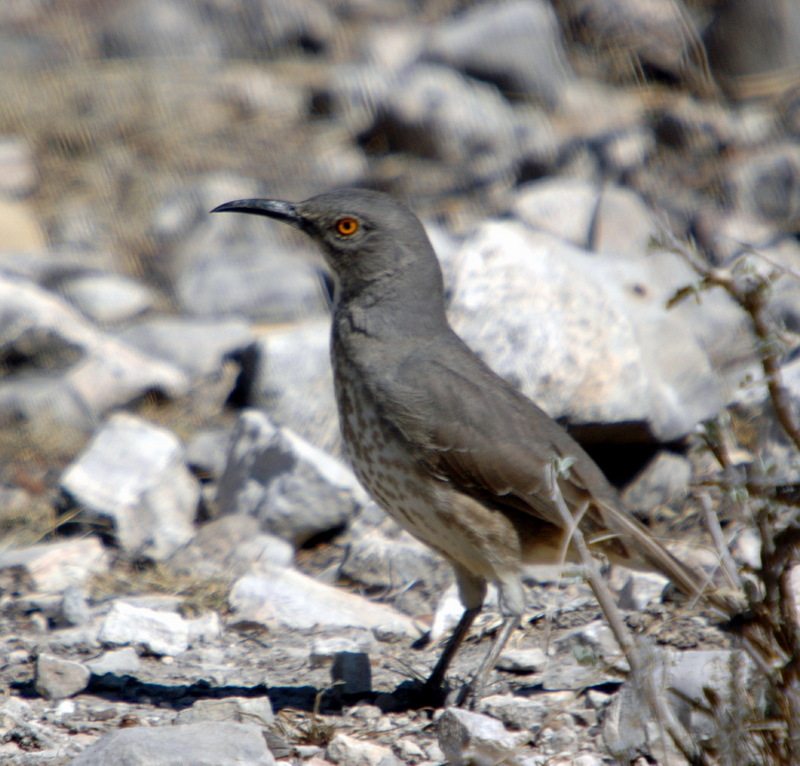|
| Query: thrasher | Result: 3rd of 94 | |
Curve-billed Thrasher (Toxostoma curvirostre) - wiki
| Subject: | Curve-billed Thrasher (Toxostoma curvirostre) - wiki
| |

| Resolution: 1044x1000
File Size: 351087 Bytes
Date: 2006:04:08 10:25:42
Camera: NIKON D70s (NIKON CORPORATION)
F number: f/12.6
Exposure: 10/4000 sec
Focal Length: 10000/10
Upload Date: 2007:08:27 21:56:35
|
Curve-billed Thrasher
From Wikipedia, the free encyclopedia
[Photo] Curve-billed Thrasher (Toxostoma curvirostre). Author Flickr user Charles & Clint http://www.flickr.com/photos/dad_and_clint/
The Curve-billed Thrasher (Toxostoma curvirostre) is a perching bird of the thrasher group native to the southwestern United States and much of Mexico.
General information
The Curve-billed Thrasher is generally 25-28 cm (10 to 12 inches) in length, slender in build with a long tail, and a long, curved, sickle-shaped bill. It is pale grayish-brown in color, with lighter colored underparts that are vaguely streaked. The tips of the tail are streaked with white, and the sides of the tail are a darker color than its back. The eye of a mature adult is usually a vivid orange to red-orange in coloration, although immature birds have a yellow eye.
Because of its similar coloration to Bendire's Thrasher, the two birds are very easily mistaken for one another. The Bendire's Thrasher's shorter and straighter bill, and its yellow eyes, are distinguishing features when comparing two mature birds. However, it is still easy to misidentify a young Curve-billed Thrasher as a Bendire's Thrasher as its beak has not grown to its mature length and curvature, and its eyes are still yellow in color. Aside from the Bendire's Thrasher, the Curve-billed Thrasher can be easily distinguished from other thrasher species in its range as they have streaked breasts, unlike the plain breasts of most other thrashers.
The Curve-billed Thrasher is found commonly throughout the deserts and brush-filled areas of the south-western United States, from about the Sonoran Desert of Arizona and across New Mexico to west Texas, as well as most of Mexico.
The Curve-billed Thrasher most often roosts in a tall tree or spiny vegetation, favourably a cactus. The nest itself is a loosely woven cup made of thorny twigs. The female will lay 2 to 4 eggs, which are bluish-green and speckled with brown. The eggs are incubated by both sexes, and hatch after about thirteen days. The young will leave the nest after 14 to 18 days after hatching.
The Curve-billed Thrasher feeds on ground-dwelling insects, as well as seeds, and berries and also often pushes out Cactus Wrens in the same area.
http://en.wikipedia.org/wiki/Curve-billed_Thrasher
| The text in this page is based on the copyrighted Wikipedia article shown in above URL. It is used under the GNU Free Documentation License. You may redistribute it, verbatim or modified, providing that you comply with the terms of the GFDL. |
|
^o^
Animal Pictures Archive for smart phones
^o^
|
|

